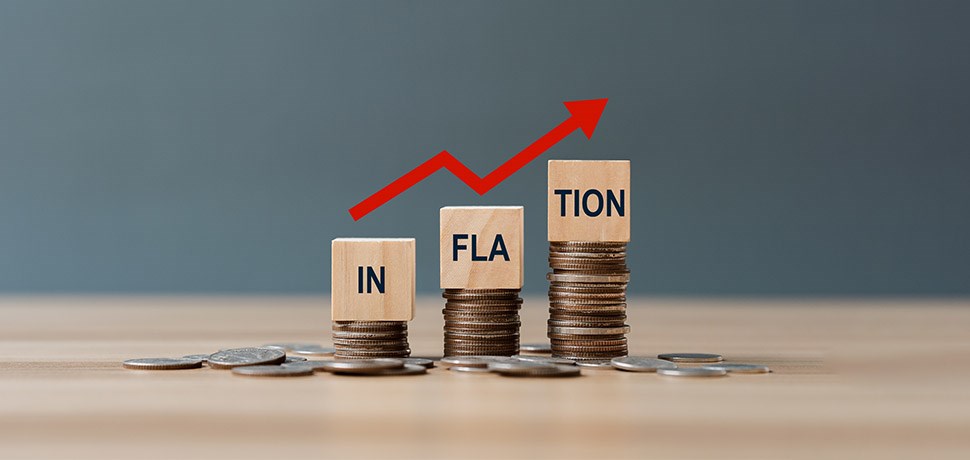
The cost of living is rising in many areas of the world, and since May 2022, consumer price inflation in South Africa has been higher than the country's Reserve bank's goal range of 3% to 6%.
These elevated levels of price increases across basic household expenses such as transport, food and electricity have made the topic of inflation as a danger to your personal financial goals as relevant as ever. When investing your money, it is important to keep in mind the very real challenge posed by inflation when trying to achieve your financial goals and ultimately maintaining your desired standard of living.
Consumer price inflation (CPI) index data show that living costs are rising continuously, which over time results in a steady decline in the value or purchasing power of your money. Inflation measures the rate at which the price of goods and services rise and therefore the rate at which the value of your money effectively declines if your money is not invested or growing in value.
The table provides an example of the rate at which money loses its purchasing power for different rates of inflation.

By way of example from the table above, every R1 that you currently own will be worth only 56 cents in 10 years at an inflation rate of 6%. Put in another way, whatever costs you R1 today will cost you approximately R1,80 in 10 years’ time at a 6% rate of inflation. This example illustrates how important it is to have an investment strategy that will allow your savings and investments to grow by more than inflation, i.e., in real terms.
A general rough rule of thumb you can use to measure the impact of inflation on the purchasing power of your money is the Rule of 72. By dividing 72 by the CPI inflation rate you can determine over what period the purchasing power of your money will halve in value. For example, if the rate of cpi inflation is 6% then the value or purchasing power of your money will halve every 12 years (72/6 = 12).
What can you do to prevent inflation from ruining the value of your own wealth, one could ask? Well, if you have the right investment strategy it is possible to fight and overcome the erosion of value caused by inflation on your wealth by harnessing the most powerful force when it comes to your investments – compound growth. Whereas inflation erodes the value of money over time, the principle of compounding offers a powerful countermeasure. Compounding can be explained as the process of accumulating wealth by allowing an asset to appreciate in value and to generate earnings (interest or dividends), which are then reinvested in order to generate additional earnings.
In other words, compounding refers to generating growth and earnings (interest and/or dividends) from earlier growth and earnings. If in year one the R1 you invested grow by 10% as a result of market growth and earning interest and or dividends then you will have R1,10 at the end of the year. So, at the start of year 2 you have ten cents more for every rand you invested at the start of year 1.
If you leave the 10 cents of growth and earnings that you got from the market in year 1 in your investment for another year and leave it to grow, then whatever growth you achieve will be on R1,10 and not only on the initial R1 invested in year 1. And so, the base on which you earn additional growth and earnings keep growing over time and generates more growth and earnings every year with a multiplying effect.
"Compound interest is the eighth wonder of the world. He who understands it, earns it, he who doesn’t, pays it." - Albert Einstein
The following table illustrates the positive impact of compounding on the value of money at different rates of return over time.

The table above, illustrates the benefits of exponential growth that can be achieved by continuously reinvesting the earnings received on your investment. The longer you leave your money invested and re-invest the growth, the more effective the compounding effect becomes.
As illustrated above, after 15 Years of growth at 10% per annum your R1 will be worth R4.18. However, if you leave the R1 for another 15 years to grow your initial R1 invested will be worth R17.45. By doubling the investment period at the same 10% rate of return you got more than 4 times as much growth on your R1 over 30 years than over 15 years. This suggests that compound growth has a multiplier effect that results in exponential investment growth or an acceleration of the growth in your investment over time.
To get the maximum benefit from the power of compounding, you need to:
Our wealth advisors deliver holistic, independent and objective advice to help you set and meet your financial goals. Click here to get started.